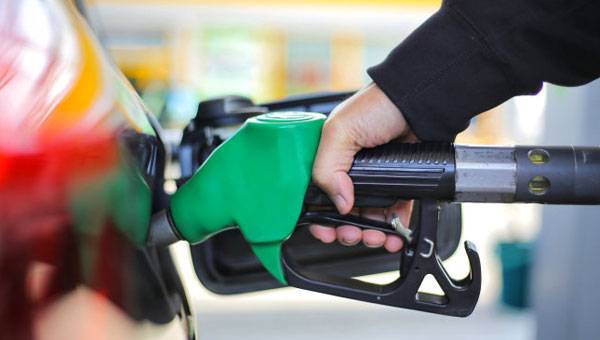
Photo: http://iStockPhoto.com
Automobile fuel prices continue to grow in Russia. Last week, Krasnoyarsk motorists were once again unpleasantly surprised. Large chains have raised prices on some items at once by several rubles. Experts explain the current increase by the rising cost of oil production.
The biggest price hike was recorded for Krasnoyarsknefteprodukt’s fuel although this company, owned by the Krasnoyarsk Territory, has always presented itself as the authorities’ lever to decease prices. However, the situation is completely opposite in real life. Krasnoyarsknefteprodukt’s prices have been higher than those of the federal chains for a long time. The Ai-98 petrol went up from 55.40 ($0.76) to 60 rubles (0.82) at the stations of the company just overnight. The best-selling Ai-92 petrol went up by 60 kopecks ($0.008) and Ai-95 by 70 kopecks ($0.01). “No comments will be made,” the Krasnoyarsknefteprodukt press service said in response to the question from the journalists of wek.ru about the reasons for the gas increase.
“They could have at least waited until the elections were over for the sake of decency!” Krasnoyarsk residents said with indignation. Moreover, this is not the first price hike. According to the Federal State Statistics Service (Rosstat), the Krasnoyarsk Territory was among the “leaders” in motor fuel price increases that amounted to 1.5% back in June. The situation is similar in other Siberian regions. According to official statistics, the average cost per litre of motor fuel is 49.8 rubles ($0.68) in Irkutsk. The Ai-98 petrol alone has gone up by 3 rubles ($0.04) in the last month. Since the beginning of the year the Ai-92 gasoline has gone up in price by 6.4% in the Republic of Khakassia. The most expensive gasoline in Eastern Siberia has traditionally been sold in Tuva, although this republic is the poorest Russian region. A litre of Ai-92 currently costs 48.50 rubles ($0.66) there. The explanation is simple – the cost of transportation. Tuva is cut off from railways by the mountain passes of the Sayan Mountains. Motor fuel is transported only by road transport into the republic.
Overall, an analysis of the energy products market shows that the cost of oil production in Russia has increased by 2.5 times since 2012. This is an objective cause of the constantly growing prices of motor fuel. The only good thing is that there were measures to hold down prices. The retail price of petrol rose “only” 1.7 times over the same period. A sharp price hike in the market was observed in the second quarter of this year. The cost of producing a tonne of oil increased immediately by 13% to over 20,000 roubles ($273) per tonne.
The regional authorities are ready to go hat in hand to the federal networks. Although a few years ago the situation was different. The fact that the market was being actively absorbed by the federal chains confused many. There was a fear that they would start dictating their terms, which might be disadvantageous. On the whole, the prices at independent filling stations turned out to be unfavorable for motorists. Federal networks are making minimum uplifts due to the fact that they sell their own petrol. Other retail stations have to buy gasoline on the exchange from the same oil kings and, accordingly, incur additional costs.
“The difference in purchase from Rosneft and private companies is about 3,000 rubles ($40.95) per tonne. Accordingly, the selling price from the state-owned company is lower. At the same time, Rosneft owns 52% of petrol stations in the Irkutsk Region, and private companies own the remaining 48%. Unfortunately, there is no possibility to negotiate direct sales of fuel without the exchange, according to the legislation. Therefore, we will meet with Rosneft representatives to increase the number of their filling stations in the region to reduce the cost of gasoline,” said Igor Kobzev, Governor of the Irkutsk Region.
According to Alexander Frolov, Deputy Director of the Institute of National Energy, national currency exchange rates and changes in tax legislation are crucial factors in the cost of production and, therefore, retail. Most of all, the MET, which depends on the ruble oil price, affects its cost of production. The MET rate has been rising for three years in a row.
“Therefore, there is no surprise that production costs are growing. The increase might have been even bigger without price suppression by the large companies. We are running into the main problem, that is, the undervalued ruble. It is because of the weak ruble that all the above-mentioned factors lead to dire consequences for the domestic market. Anyway, we have to admit that our gasoline and diesel prices are not only among the lowest in the world, but they also do not descend to the critical levels in terms of the population's welfare,” said Frolov.
We would like to add that according to the Ministry of Energy, gasoline production in Russia increased by 7.4% last week. Shipments of fuel and lubricants to the domestic market are in line with 2019-2020 levels. Sales through the exchange are on average 17% higher since the beginning of August than the same period last year. Gasoline stocks are holding steady at a stable level of about 1.6 million tonnes despite scheduled summer maintenance at Russian refineries. In general, the price situation on the domestic retail market of automobile fuel confirms the rule that everyone has known for a long time in Russia: the price of petrol in the country hardly depend on the cost of oil. Prices are mainly formed by taxes and excise duties. The export-oriented government always finds income by reducing public spending and raising various direct and indirect charges from the residents in case of fluctuations on the foreign market. This includes excise taxes on petrol and diesel.
